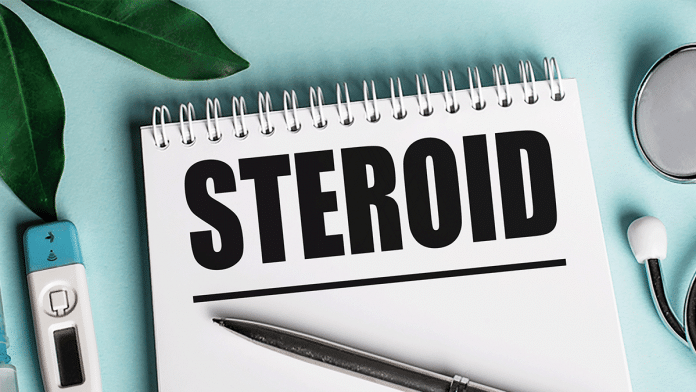Steroid drugs usually contain biologically active compounds or hormone derivatives which closely resemble cortisol or testosterone. Cortisol and testosterone both are steroid hormones naturally produced by the body.
Steroids are mainly of two types; Corticosteroids and anabolic steroids.
Corticosteroids are usually the steroids that doctors prescribe for the patients in various disease conditions. Anabolic steroids are the steroids that are mostly used to gain muscle mass or to improve physical performance.
Let us know more about corticosteroids and anabolics steroids.
Corticosteroids are drugs that contain cortisol or agents which mimic cortisol activity.
There are two main classes of corticosteroids; glucocorticoids and mineralocorticoids.
Glucocorticoids have anti-inflammatory and immunity altering activity. Mineralocorticoids regulate sodium, potassium, and water levels in the body. A corticosteroid can have both the effects of glucocorticoid and mineralocorticoid in varying degrees. A corticosteroid with strong anti-inflammatory actions can show some mineralocorticoid activity, as well. This action can result in an unwanted effect on blood pressure. Therefore corticosteroids should be carefully selected. Their application should be according to their appropriateness for a given treatment.
Long term use of glucocorticoids can lead to many side effects such as weight gain, bruising, muscle weakness, skin changes, and sleep disturbances. It can also make the body prone to fractures. Glucocorticoids can cause psychiatric side effects as well e.g., mood disorders, anxiety, delirium, and panic attacks. Glucocorticoids can sometimes induce diabetes. Therefore blood sugars should be measured repeatedly with glucocorticoid treatment.
Mineralocorticoids increase the absorption of sodium and water and excretion of potassium. Their excess use can cause disturbances in the natural mineral and water levels in the body, which can result in untoward effects in the body.
Corticosteroids should be given to patients very carefully and under strict medical supervision. These drugs might make worse a pre-existing condition or result in the manifestation of a new medical condition. It is essential to know the implications involved in treatment with corticosteroids and should be used when there is no other option available.
Anabolic steroids are drugs that have testosterone or testosterone derivatives or synthetic testosterone. They are often used to improve physical performance and muscle growth. They are also given to bedbound patients to prevent muscle wasting due to inactivity. They are administered in some other medical conditions as well, such as liver disease, aids, renal failure, certain cancers, and burns.
There is a potential for abuse in the case of anabolic steroids as they can be used to increase muscle mass and strength. Athletes can illicitly take these steroids and have an unfair competitive advantage. The first anabolic steroid was used as a doping agent by professional athletes in 1960. It was banned from the Olympics in 1974.
Inappropriate use of these anabolic steroids can cause a variety of adverse effects e.g., mood swings, irrational behavior, aggressiveness, irritability, and depression. Increased acne is also common.
Parents and guardians should keep an eye on young adults and adolescents to prevent any abuse of the anabolic steroids. People vulnerable to drug abuse should be taught about the risks involved. Healthy ways of improving muscle mass and performance should be adopted. Proper nutrition and weight training are the risk-free alternatives to anabolic steroids.
Athletes should also be educated regarding potential harms and side effects caused by these drugs. They also should be told about the presence of sophisticated detection methods available now, which can result in their disqualification from the competition. Such measures can act as a deterrent for the athletes in case of their inclination towards using these performance-enhancing drugs.
Until Next Time,
Team Doctor ASKY!





















